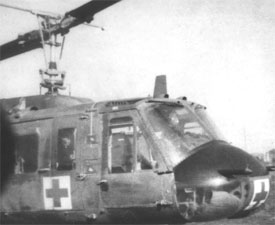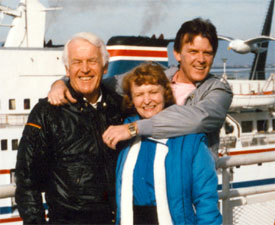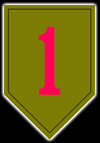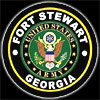 |
Sammamish
Wall of Honor David Robert Garretson Carmel High School, IN Class of June, 1965 |
 |
|||||||||||||||||||||||||||||||||||||||||||||||||||||||||||||||||||||||||||||||||||||||||||||||
| Research done by Claradell Shedd. | |||||||||||||||||||||||||||||||||||||||||||||||||||||||||||||||||||||||||||||||||||||||||||||||||
| David Robert Garretson | |||||||||||||||||||||||||||||||||||||||||||||||||||||||||||||||||||||||||||||||||||||||||||||||||
| David
was a member of Carmel, IN High School and graduated in June, 1965.
October 25, 1965: Enlisted in US Army in Indianpolis. Processed aat
Fort Knox, KY and then David completed Basic Infantry Training at Fort
Rucker, AL. From Fort Rucker, he proceeded to Vietnam via San Francisco.
His service number was RA 16 842 553. David's next of kin at time of
US Army deployment shown as Mr. and Mrs. Robert Francis Garretson. In Vietnam, David was a Specialist E-5 assigned to the 1st Calvary Division. serving as Crew Chief on Bell's Huey Delta helicopter force.. Note: In August 1965 the U.S. 1st Cavalry Division established their main base, Camp Radcliff, near An Khê. In September of that year, the Battle of An Ninh took place about 30 km east of the town. Camp Radcliff remained in use by various U.S. Army units until late 1970 after which it was turned over to the ARVN. After his US Army discharged David graduated from Indiana University in Indianapolis (IUPUI; Indiana University/ Purdue University/Indianapolis) in June, 1973.. |
|||||||||||||||||||||||||||||||||||||||||||||||||||||||||||||||||||||||||||||||||||||||||||||||||
|
|||||||||||||||||||||||||||||||||||||||||||||||||||||||||||||||||||||||||||||||||||||||||||||||||
| *Fort
Knox, KY: Fort Knox is a United States Army installation in Kentucky, south of Louisville and north of Elizabethtown. It is adjacent to the United States Bullion Depository, which is used to house a large portion of the United States' official gold reserves, and with which it is often conflated. The 109,000-acre (170 sq mi; 440 km2) base covers parts of Bullitt, Hardin and Meade counties. It currently holds the Army Human Resources Center of Excellence, including the Army Human Resources Command. It is named in honor of Henry Knox, Chief of Artillery in the American Revolutionary War and the first United States Secretary of War. For 60 years, Fort Knox was the home of the U.S. Army Armor Center and School, and was used by both the Army and the Marine Corps to train crews on the American tanks of the day; the last was the M1 Abrams main battle tank. The history of the U.S. Army's Cavalry and Armored forces, and of General George S. Patton's career, is shown at the General George Patton Museum on the grounds of Fort Knox. **Fort Novosel (formerly Fort Rucker) basic training here: Fort Novosel (formerly Fort Rucker) is a United States Army post located primarily in Dale County, Alabama, United States. It is named in honor of Chief Warrant Officer Michael J. Novosel, an Army aviator and Medal of Honor recipient. It was previously named for a Civil War officer, Confederate Colonel Edmund Rucker.[4] The post is the primary flight training installation for U.S. Army Aviators and is home to the United States Army Aviation Center of Excellence (USAACE) and the United States Army Aviation Museum. Small sections of the post also lie in Coffee, Geneva, and Houston counties. Part of the Dale County section of the base is a census-designated place; its population was 4,636 at the 2010 census. In September 1942, 1,259 additional acres south of Daleville were acquired to construct an airfield to support the training camp. It was known as Ozark Army Airfield until January 1959, when the name was changed to Cairns Army Airfield. The first troops to train at Camp Rucker were those of the 81st Infantry Division; the 81st Division left Rucker for action in the Pacific Theater in March 1943. Three other infantry divisions received training at Camp Rucker during the war—the 35th, the 98th, and the 66th. The 66th (Panther) Division left for the European Theater in October 1944. Camp Rucker was also used to train dozens of units of less than division size; these included tank, infantry replacement, and Women's Army Corps units. During the latter part of World War II, several hundred German and a few Italian prisoners of war were housed in stockades near the railroad east of the warehouse area, on the southern edge of the post. The 91st Infantry Division was sent to Camp Rucker at the war's end, deactivated in December 1945. Camp Rucker was inactive from March 1946 until August 1950. It was reopened during the Korean War. The Minnesota Army National Guard's 47th Infantry Division was mobilized and sent to Camp Rucker in the fall of 1950; the division provided cadre that would conduct basic training of soldiers, who would later on, be sent as replacements to units in Korea. The 47th Infantry Division would remain at Camp Rucker throughout the war. After another short deactivation, it reopened and expanded when it became a helicopter training base. The name was changed to "Fort Rucker" in October 1955. The Hanchey Army Airfield became the home of the Department of Rotary Wing Training of the Army Aviation School on 5 October 1959, marking the first time the department was centralized. Army Crew Chief Patch; Vietnam: 1st Aviation Brigade in Viet Nam "Crew Chief" Patch - The 1st Aviation Brigade served in Vietnam from May 1966 to March 1973. The helicopter becoming an instrument of war, the Army had to have a means where it could maintain tactical and administrative control of all of its divisional and non-divisional helicopters and fixed-wing aircraft in Vietnam. The Army did this with the creation of the 1st Aviation Brigade, which served in Vietnam from May 1966 to March 1973. In Vietnam, the Brigade had under its authority 4,000 rotary-wing and fixed-wing aircraft and 24,000 troops, consisting of about 4,000 officers and 20,000 enlisted troops. During the war, the Aviation Brigade and its support units became involved in four significant tactical operations that warrant examination. The first tactical operations in which the Brigade and its units became involved were the 1968 Tet Offensive from January to March 1968. In this operation the Brigade and its units responded to tactical situation and the sudden precarious incursions into major cities throughout South Vietnam wrought by the North Vietnamese and Viet Cong armies. The second important operation involving Army Aviation units, in April 1968, was the relief operation by the 1st Cavalry Division (Airmobile) to lift the North Vietnamese Army siege of the embattled USMC base at Khe Sanh. Dubbed PEGASUS, the operation successfully combined airmobile operations and a sustained road march by 1st Cavalry "Sky troopers"; and Marine Corps units to lift the siege. The third significant Army helicopter operation South Vietnam was the incursion of the American and South Vietnamese Armies into neighboring Cambodia in May 1970 to ferret out and destroy North Vietnamese units and their supply depots. The Armies were allowed to advance only 30 kilometers (km) into Cambodia because of a presidential order. However, the deployment into Cambodia was successful. The Armies uncovered a number of large ammunition and food caches. These caches were later transferred back to South Vietnam where they were either destroyed or, so far as food, given to local villagers. The fourth and final important large-scale operation involving mass use of Army helicopters in South Vietnam was LAMSON 719, which took place from January to April 1971. This mid-intensity-level operation had as its mission the coordinated insertion of South Vietnamese troops by air and armored units into Laos to drive North Vietnamese regulars out of areas contiguous to the South Vietnamese border. American lift helicopters ferried South Vietnamese troops into Laos. Helicopter gun-ships provided CAS (combat air support) for the South Vietnamese and destroyed a number of North Vietnamese P-76 tanks. The Army suffered the loss of about 100 helicopters, most of which were shot down by Soviet-built 37 millimeter (mm), radar-directed, antiaircraft guns. Some helicopters were lost because of the pervasive inclement weather resulting from the monsoon season in Southeast Asia. During LAMSON 719, Army helicopter pilots often were forced to fly in what at best could be discerned as marginal weather. Helicopters serving in the Vietnam War did not have tactical radar on board, so pilots had a difficult time flying during inclement weather. The fact that more helicopters were not lost during this operation was due, in large measure, to the flying skills and bravery of these pilots. LAMSON 719 itself incurred a great deal of controversy within and without military circles as to its efficacy and results. The operation served as a lessons learned report for the Army. It also brought out the need for the Army to have more heavily armed helicopters in such operations, and attendant and better close air coordination with the USAF. During the Vietnam War, the Army had a number of helicopters in its inventory that played important roles during the conflict. The UH-1 Huey was a multifaceted aircraft serving as a troop carrier, gunship, MEDEVAC helicopter, and cargo carrier. The CH-47 Chinook and the CH-54 Sky Crane were primarily supply, lift and transport helicopters. The Army also had two observation helicopters that acquitted themselves well in South Vietnam. They were the OH-6 Cayuse (Loach) and the OH-58 Kiowa. However, the most formidable helicopter to serve in Vietnam was the AH-1 Cobra gunship, which first arrived in country in 1967. The Cobra carried wing mounted 7.62mm machineguns, 2.75-inch rocket launchers, a 40mm M75 grenade launcher, and an XM 134 Minigun. It caused much havoc upon enemy units, equipment, and personnel during a period of service in South Vietnam. The Army still uses the AH-1 Cobra Gunship. Camp Radcliff at An Khe Airfield, Gia Lai Province, Vietnam: Camp Radcliff was established in late August 1965 by the 70th Engineer Battalion as the base camp for the 1st Cavalry Division. The camp was located on the main highway, QL-19, 60 kilometres (37 mi) northwest of Qui Nhon on the coast and 60 kilometres (37 mi) southeast of Pleiku in the Central Highlands. The camp was named after 1/9 Cavalry Major Donald Radcliff, the 1st Cavalry's first combat death, who was killed on 18 August 1965 while supporting U.S. Marines in his helicopter gunship during Operation Starlite. In order to reduce the amount of rotor-blown dust on the landing zone, the men of the 1st Cavalry Division's advance party were instructed to cut back foliage to ground level by hand giving the base its nickname of the Golf Course] The division also painted their distinctive insignia on nearby Hon Cong Mountain providing a landmark visible for many miles. Camp Radcliff was the largest helicopter base in the world at the time of its establishment, capable of accommodating the division's 400+ helicopters. The base also had an airfield to the south east called An Khe Airfield capable of landing Lockheed C-130A Hercules aircraft. The base had a perimeter of 26 km known as the Green Line with 3-man watchtowers every 50m. On the night of 3 September 1966 the Viet Cong carried out a mortar attack on the Golf Course. Starting at 21:50 the base was hit by 119 mortar rounds over a 5-minute period, killing 4 soldiers and wounding a further 76, while 77 helicopters were damaged. ***Fort Stewart, GA; Hunter Army Airfield (mustered out here) When the U.S. Air Force closed its base at Hunter Field in Savannah in 1967, the Army promptly assumed control and in conjunction with the flight training being conducted at Fort Stewart, the U.S. Army Flight Training Center came into being. The helicopter pilot training was rapidly accelerated and pilots were trained and soon sent to duty all over the world, with a large percentage seeing active duty in Vietnam. The Army established the first dedicated attack helicopter training school at Hunter in July 1967. The Attack Helicopter Training Department (AHTD) trained Army, Marine and a few foreign officers (principally Spanish Navy) in the AH-1G Cobra attack helicopter. Hunter Army Airfield, covers about 5,400 acres (22 km2) and is also the home of the U.S. Coast Guard Station, Savannah – the largest helicopter unit in the Coast Guard. It provides Savannah and the Southeast United States with round-the-clock search-and-rescue coverage of its coastal areas. >In 1969 President Nixon planned to reduce American involvement in Vietnam by training the Vietnamese military to take over the war. In conjunction with this, helicopter flight training for Vietnamese pilots began at the Training Center in 1970 and continued until 1972. Gradually America's involvement in Vietnam dwindled and by mid-1972 the flight training aspect of Fort Stewart's mission was terminated, and both Hunter Field and Fort Stewart reverted to garrison status. The following year Hunter Field was closed entirely and Fort Stewart sat idle, with the exception of the National Guard training which continued to be conducted at the installation. |
|||||||||||||||||||||||||||||||||||||||||||||||||||||||||||||||||||||||||||||||||||||||||||||||||
|
|||||||||||||||||||||||||||||||||||||||||||||||||||||||||||||||||||||||||||||||||||||||||||||||||
|
|||||||||||||||||||||||||||||||||||||||||||||||||||||||||||||||||||||||||||||||||||||||||||||||||
|
|||||||||||||||||||||||||||||||||||||||||||||||||||||||||||||||||||||||||||||||||||||||||||||||||
|
|||||||||||||||||||||||||||||||||||||||||||||||||||||||||||||||||||||||||||||||||||||||||||||||||
|
|||||||||||||||||||||||||||||||||||||||||||||||||||||||||||||||||||||||||||||||||||||||||||||||||
| Has lived in Sammamish, WA since June 19, 1986. | |||||||||||||||||||||||||||||||||||||||||||||||||||||||||||||||||||||||||||||||||||||||||||||||||
| Music: "We've Got To Get Out of This Place" by the Animals. | |||||||||||||||||||||||||||||||||||||||||||||||||||||||||||||||||||||||||||||||||||||||||||||||||
| Home
|
Back/allyears |
WWI |
WWII |
Korea |
Vietnam |
Afghanistan/Iraq |
Lyrics
|
Refs/Awards | Contact | Roster ©2024-csheddgraphics All rights reserved. All images and content are © copyright of their respective copyright owners. |
|||||||||||||||||||||||||||||||||||||||||||||||||||||||||||||||||||||||||||||||||||||||||||||||||































